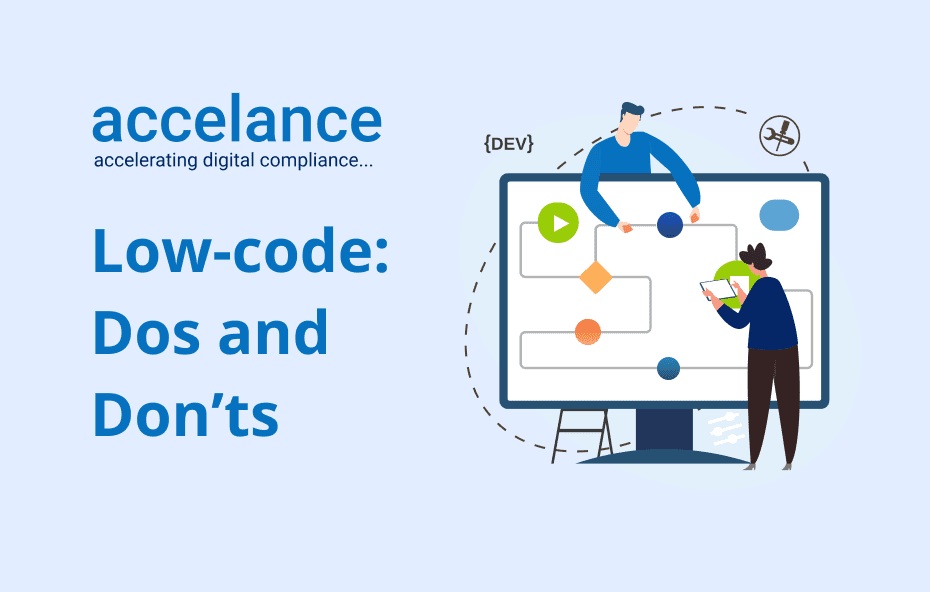Enterprise software is becoming ever more complex, with more features and functionality being added to applications every day. To keep up with the demands of customers and keep development costs down, many developers are turning to low-code development techniques.
What is a Low-Code?
Low-code is a term that is used to describe platforms or software that allow for the creation of applications without requiring extensive coding knowledge. Low-code platforms are often marketed as a way to speed up the process of application development and can be used by developers with little to no coding experience.
This approach accelerates the application development process, while also ensuring the quality and reliability of the finished product. Enterprises that adopt low code development platforms can quickly deploy custom applications that meet their specific needs.
How to get the most out of your low-code development?
Applications developed using low-code are more maintainable and scalable than those created using traditional approaches. Here is a list of the dos and don’ts to get the most out of low-code development.
Get ahead with these dos of low-code development
Low-code development can help you streamline your workflow and deliver features faster. Here are the key dos of low-code development to get ahead:
- Start by understanding your needs. What business problems do you need to solve?
- Select the right low code platform for your requirements
- Do design your application using patterns and architectures that are common to the enterprise
- Leverage pre-built components and rapid application development tools to build your applications quickly and efficiently.
- Do use a library or framework that is known for its reliability and performance in the enterprise.
- Ensure that your application is running on the right database.
- Do use a product development process that is familiar to developers and managers in the enterprise, such as agile methodologies.
- Work with subject matter experts to identify specific pain points that need to be addressed.
- Deploy your applications in the cloud for easy scalability and access from anywhere in the world.
Don't make these low-code development mistakes!
When it comes to enterprise application development, there are a few things you should avoid. With low-code development platforms, it’s easier than ever to make mistakes that can impact your bottom line. Here are some important don’ts to keep in mind:
- Don't try to do too much with your low-code app. Keep it simple and focused on one or two specific tasks.
- Don't ignore security concerns, make sure your app is locked down tight, especially if it will be accessed by employees or customers.
- Don't write everything from scratch. Use frameworks, libraries, and other reusable components to speed up your development process. They can also help you adhere to coding standards and avoid common programming mistakes.
- Don't skimp on testing, make sure your app is thoroughly tested before going live.
- Don't forget about scalability, your app needs to be able to grow with your business.
- Legacy code is often difficult to change and maintain, and it can lead to inconsistency and chaos in your application development process. Therefore, it should be avoided.
- Don't neglect the user experience.
Benefits of low-code for enterprise app development
- Low-code platforms are revolutionizing the process of enterprise app development by providing a simple visual interface. Low-code platforms allow business users and developers to collaborate on the creation of custom applications with little or no coding required.
- Enterprises can quickly build and deploy apps that meet their specific needs without having to rely on IT or specialized software development teams.
- Applications developed in this way are also more maintainable and scalable than those created using traditional approaches.
- Low-code platforms provide a number of benefits when it comes to security and scalability.
- Low-code development also enables you to be more agile, making it easier to adapt to changing needs and requirements.
- Additionally, low-code development is less expensive than traditional software development methods.
The future of low-code: what's on the horizon for this exciting technology?
A revolutionary change has occurred in software development thanks to low-code platforms. For businesses that wish to develop custom applications quickly without having to hire a specialized developer, this approach ensures quality and reliability while speeding up the development process. Platforms with low-code still have a lot of room for growth. Here are some of the things we can expect from low-code in the future:
- More powerful and user-friendly platforms will emerge.
- The number of low-code specialists will increase, making it easier to find someone to help you build your application.
- Applications built on low-code platforms will become more sophisticated and feature-rich.
- Integration with other tools and services will become easier, allowing businesses to create end-to-end solutions that meet their specific needs.
- A faster time-to-market and greater customization of applications will be possible for businesses.
- Low-code platforms will allow businesses to take advantage of improved computing power and reduce the cost of development.
Final thoughts
Enterprise application development with low-code can be a great way to get your business up and running quickly, but there are some things to keep in mind. Make sure you have a clear idea of what you want your application to do and be prepared for some customization and coding if you need it. Also, make sure you have the resources in place to support the application once it’s up and running.






